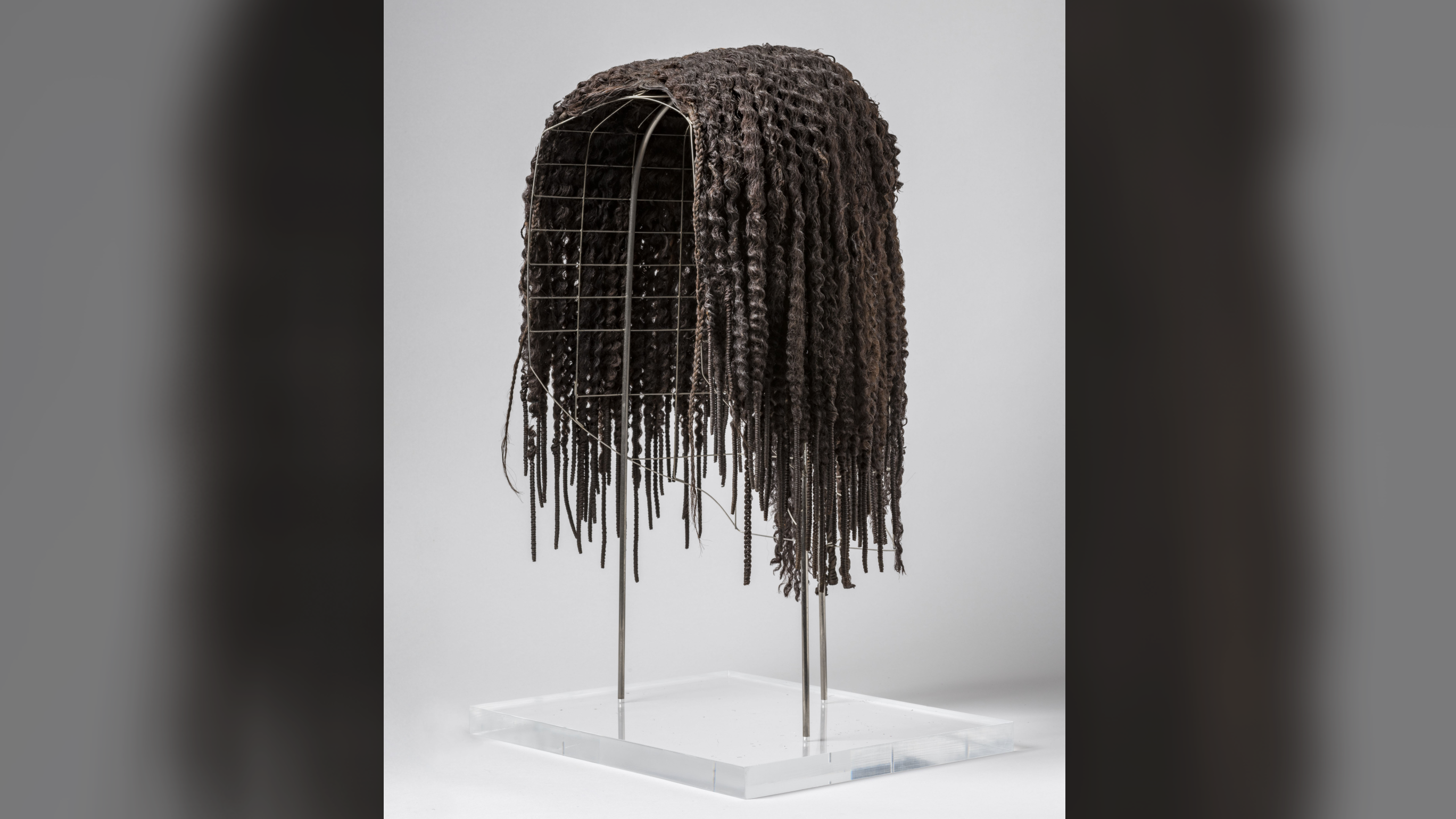Merit's wig: A 3,400-year-old Egyptian headpiece smoothed down with ancient homemade hair gel
Merit's head covering was made from real human hair and was buried with her in its own wooden cabinet.

Name: Merit's wig
What it is: A styled wig made from human hair
Where it is from: Luxor, Egypt
When it was made: Circa 1425 to 1353 B.C.
In 1906, archaeologists discovered this wig of an Egyptian woman known as Merit when excavating her tomb, which she shared with her husband Kha, in Luxor (known in ancient times as Thebes). Archaeologist Ernesto Schiaparelli wrote that the wig, made from dark-brown human hair, was still shining from the perfumed oils that had been applied to it more than three millennia before it was found.
Schiaparelli discovered the wig in a tall acacia wood box that was inscribed with Merit's name. Within the box, two wooden, linen-covered stands supported the wig. The richly furnished tomb also included the bejeweled mummies of both Kha — an architect for the New Kingdom pharaoh Amenhotep II — and Merit, as well as her stocked cosmetic chest, a basket of her hairpins, razors and wooden combs. Most of the 500-plus artifacts from the Tomb of Kha and Merit are in the collection of the Egyptian Museum in Turin, Italy.
Merit wore her center-parted, crimped wig on top of her own shaved or closely cropped hair. The small waves were likely made by braiding the hair when wet and then taking out the braids when dry.
According to the Egyptian Museum, "this type of hairdo was often decorated with flowers and diadems, which were very fashionable in the mid-18th dynasty, as can be seen in paintings and statues of the period."
Wigs were commonly worn by elite men and women in ancient Egypt. They allowed people to have elaborate hairstyles but also protected them from direct sunlight and from head lice. Some people shaved their heads fully before donning a wig, while others wore their natural hair cropped short underneath the wig.
In a 2016 study of Merit's wig, researchers used gas chromatography mass spectrometry — an analysis method that identifies and measures chemical compounds in a sample — to figure out more details about Merit's original hairstyle and grooming regime. They found evidence of plant oil on the hair, which may have been used to keep it smooth and in good condition, like ancient hair gel. They also detected evidence of cholesterol — a compound found in the human scalp — on one of the combs, suggesting that Merit used the comb during her lifetime.
Based on this analysis, the researchers concluded that Merit "combed her own hair flat, smoothing it down with an application of the plant oil, plant gum, balsam and beeswax mixture that was also found between the comb's teeth."
A number of wigs and extensions have been preserved from ancient Egypt, with the earliest known example dating back to 3400 B.C., according to Egyptologist Joann Fletcher. The topic of Egyptian hairstyles has gained popularity in the past few decades, according to Fletcher, so there is still a lot to be learned from preserved wigs like Merit's.
For more stunning archaeological discoveries, check out our Astonishing Artifacts archives.

Kristina Killgrove is a staff writer at Live Science with a focus on archaeology and paleoanthropology news. Her articles have also appeared in venues such as Forbes, Smithsonian, and Mental Floss. Kristina holds a Ph.D. in biological anthropology and an M.A. in classical archaeology from the University of North Carolina, as well as a B.A. in Latin from the University of Virginia, and she was formerly a university professor and researcher. She has received awards from the Society for American Archaeology and the American Anthropological Association for her science writing.
You must confirm your public display name before commenting
Please logout and then login again, you will then be prompted to enter your display name.


